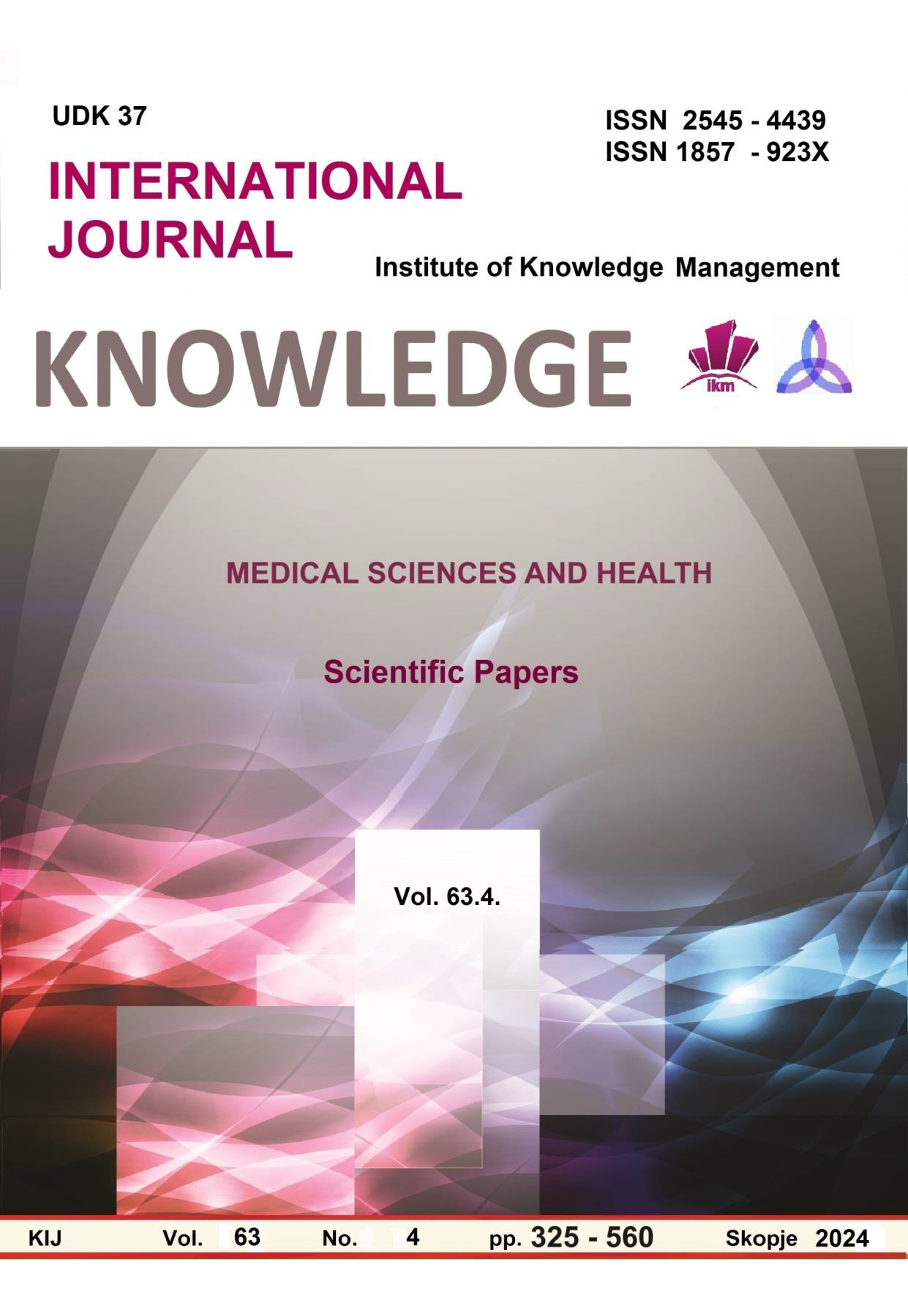КОЖНИ МАНИФЕСТАЦИИ КАЈ ХЕПАТИТ Б ВИРУСНА ИНФЕКЦИЈА: ПРИКАЗ НА СЛУЧАЈ И ПРЕГЛЕД НА ЛИТЕРАТУРА
CUTANEOUS MANIFESTATION OF ACUTE HEPATITIS B VIRUS INFECTION: A CASE REPORT AND LITERATURE OVERVIEW
Author(s): Martina Gjorgjievska Kamceva, Strahil GazepovSubject(s): Social Sciences, Health and medicine and law
Published by: Scientific Institute of Management and Knowledge
Keywords: hepatitis B virus infection;skin manifestations
Summary/Abstract: Recognition of the extrahepatic unique dermatologic manifestation associated with the acute hepatitis B virus infection is important in order to obtain proper and timely diagnosis and treatment of the patient. Hepatitis B virus infections is not so rare disease, but it can still be a global problem because in addition to the characteristic clinical symptoms, including yellowing of the skin and eyes, dark urine, extreme fatige, abdominal pain, vomitus and nausea, most people do not experience any symptoms when newly infected ordevelop less specific symptoms such as skin manifestations. Acute HBV infection is often a mild, asymptomatic, subclinical illness that frequently passes without detection in approximately two thirds of cases. Symptoms of acute HBV infection are often nonspecific, and diagnosis is secured through serologic testing for immunoglobulin M antibody to hepatitis B core antigen. The time frame for clinical incubation of acute HBV infection averages 2—3 months, however, this time frame can range from 1—6 months after exposure. There is some evidence that the time of incubation correlates with the size of the viral load.HBV primarily affects the hepatocytes, but there are studies showing that other organs can also be affected. Extrahepatic manifestations are not specific for HBV, the pathophysiology of such changes is the result of reactions of immune complexes that manifest symptoms in other organs. We present the case of a 30-year old women who was first diagnosed with Keratosis pillaris. The patient comes for the first time for an examination at the Dermatovenerology department at Clinical hospital, Shtip, with itching in the area of the lower extremities, the gluteal region and occasionally on the upper limbs, she does not give any information about other symptoms and signs, the changes persisted for about two weeks. On examination, small popular efflorescence are visible, slightly reddened, the skin is dry and rough to the touch. Antihistamine, corticosteroid and emollient therapy was given. After two weeks, the patient came for a follow-up examination without improvement of the symptoms, here the information is given that the itching is more intense every day. Routine blood test were performed which showed increased values of alanine aminotransferase 529 IU/L (43 IU/L), and aspartate transaminase 589IU/L(45IU/L). Future investigations establish the diagnosis: Acute infection with hepatitis B virus. The patient was sent to an Infectologist who confirm the diagnosis and prescribed electrolyte and vitamins intravenous therapy and hepatoprotectors. After few days the skin manifestation was disappeard. But the patient was in a overlap period for a long time because the values of antibodies and antigen of the hepatitis B virus were elevated.
Journal: Knowledge - International Journal
- Issue Year: 63/2024
- Issue No: 4
- Page Range: 379-382
- Page Count: 4
- Language: Macedonian

